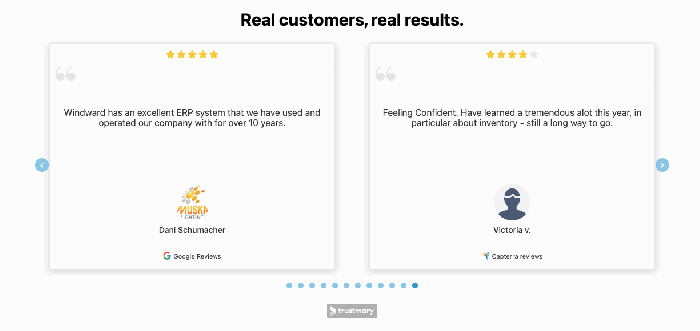Using Testimonials in Marketing dives into the power of customer feedback to establish credibility and trust, essential elements for successful marketing campaigns. Get ready to explore how testimonials can shape consumer perceptions and drive business growth.
From the different types of testimonials to collecting authentic feedback, this guide will equip you with the knowledge to leverage testimonials effectively in your marketing strategy.
Introduction to Using Testimonials in Marketing

Testimonials play a crucial role in marketing campaigns by providing social proof and building trust with potential customers. These customer reviews and recommendations can greatly influence purchasing decisions and help establish credibility for a brand.
Importance of Testimonials
Testimonials showcase real experiences and feedback from satisfied customers, which can resonate with others who are considering a product or service. They offer a level of authenticity that traditional advertising often lacks, making them a powerful tool in marketing strategies.
Building Credibility and Trust
Customers are more likely to trust a brand when they see positive testimonials from others who have had a good experience. By highlighting these testimonials in marketing materials, companies can demonstrate their reliability and commitment to customer satisfaction.
Examples of Effective Testimonial Use
- Amazon features customer reviews prominently on product pages, allowing shoppers to see feedback from other buyers before making a purchase.
- Dollar Shave Club’s marketing campaigns often include humorous testimonials from satisfied customers, creating a relatable and engaging brand image.
- HubSpot uses case studies and testimonials from clients to showcase the success stories of businesses that have used their marketing software, highlighting real-world results.
Types of Testimonials

When it comes to testimonials in marketing, there are several types that businesses can utilize to showcase positive feedback from customers. Each type of testimonial has its own unique impact on the audience, influencing their perception of the brand and products or services offered. Let’s explore the different types of testimonials and their effects.
Written Testimonials
Written testimonials are one of the most common types, typically found on websites, social media, or marketing materials. These testimonials consist of written reviews or quotes from satisfied customers, sharing their positive experiences with a particular product or service. Written testimonials can add credibility and trustworthiness to a brand, as they are often perceived as genuine and authentic.
Video Testimonials
Video testimonials are a powerful way to connect with the audience on a more personal level. These testimonials feature customers sharing their feedback through video content, allowing potential customers to see and hear the satisfaction in their own words and expressions. Video testimonials are highly engaging and persuasive, as they provide a more dynamic and compelling portrayal of the customer experience.
Social Media Testimonials
Social media testimonials involve customers sharing their feedback and experiences on platforms like Facebook, Instagram, Twitter, and more. These testimonials can take the form of posts, comments, or reviews, reaching a wide audience and influencing potential customers. Social media testimonials are impactful due to their real-time nature and the ability to generate social proof through likes, shares, and comments.
Examples of Businesses Utilizing Testimonials, Using Testimonials in Marketing
– Amazon: Utilizes written testimonials on product pages to showcase customer reviews and ratings.
– Airbnb: Incorporates video testimonials from hosts and guests to highlight positive experiences and build trust.
– Glossier: Leverages social media testimonials from influencers and customers to create user-generated content and engage with their audience.
How to Collect Testimonials: Using Testimonials In Marketing
To gather authentic and compelling testimonials from customers, it is essential to follow certain strategies and best practices. One key aspect is to ensure that customers feel comfortable sharing their feedback and that their testimonials accurately represent their experiences.
Obtaining Permission
When collecting testimonials, it is crucial to obtain permission from customers before using their feedback in marketing materials. This not only shows respect for their privacy but also ensures that you are legally allowed to showcase their testimonials publicly. Make sure to clearly Artikel how their testimonials will be used and ask for their consent in writing.
Incentivizing Customers
To encourage customers to leave testimonials, you can consider offering incentives such as discounts, freebies, or exclusive offers. By providing value in return for their feedback, you are more likely to receive a higher number of testimonials. Additionally, you can make the process easy and convenient for customers by providing clear instructions on how to leave a testimonial and offering support if needed.
Incorporating Testimonials in Marketing Materials
Testimonials are a powerful tool in marketing, and incorporating them into various marketing materials can significantly enhance their impact. By showcasing positive feedback from satisfied customers, businesses can build trust and credibility with their target audience. Let’s explore how testimonials can be integrated into different marketing channels and the best practices for leveraging them effectively.
Websites
One of the most common ways to incorporate testimonials into marketing materials is by featuring them on websites. Placing testimonials on the homepage or product pages can help visitors gain confidence in the brand and its offerings. It’s crucial to ensure that the testimonials are genuine and provide specific details about the positive experience with the product or service.
Social Media
Social media platforms are another great avenue for showcasing testimonials. Businesses can create engaging posts or stories featuring testimonials from happy customers. Encouraging satisfied customers to share their testimonials on their own social media accounts can also help reach a wider audience and boost credibility.
Print Materials
Print materials such as brochures, flyers, and posters can also benefit from the inclusion of testimonials. Adding quotes or snippets from customer reviews can grab the attention of potential customers and persuade them to learn more about the product or service. Including visuals like photos of the customers alongside their testimonials can make the content more relatable and authentic.
Creative Showcase Ideas
- Create video testimonials featuring customers sharing their experiences in their own words.
- Design infographic-style testimonials that highlight key benefits or results achieved by customers.
- Host live Q&A sessions on social media where satisfied customers can share their testimonials in real-time.
Best Practices for Leveraging Testimonials
- Ensure testimonials are authentic and from real customers to maintain credibility.
- Include specific details and results in testimonials to make them more impactful and believable.
- Regularly update testimonials to keep the content fresh and relevant to potential customers.
- Feature testimonials prominently on marketing materials to catch the attention of visitors and highlight social proof.





